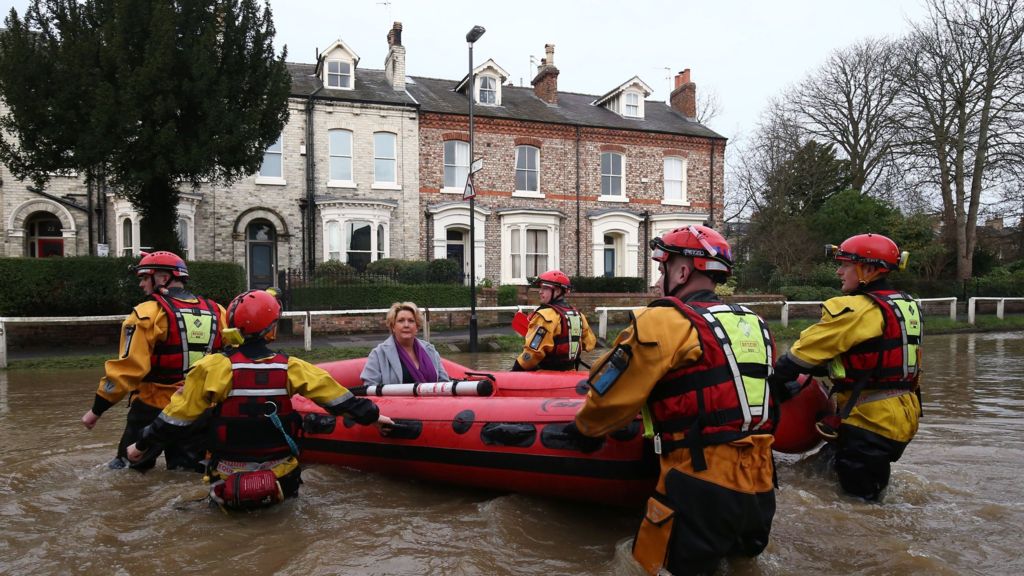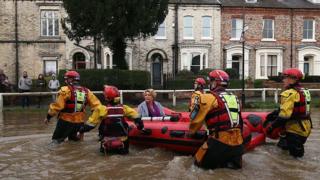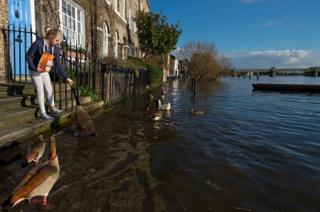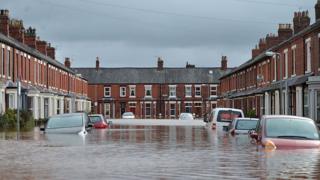1.8bn earmarked for Thames Estuary flood defences – BBC News

 Image copyright AFP
Image copyright AFP Half of all the money earmarked for new flood defences in England will be spent on protecting London and areas around the Thames, official figures show.
Analysis by BBC News has found 1.8bn will be spent on the Thames Estuary out of a 3.7bn national flood spending programme.
About 16,000 homes were flooded across the North of England a year ago.
The Environment Agency said it invested money “where it will have the most benefit”.
The disparity in regional flood defence spending comes as many flood victims remain homeless, 12 months after storms Desmond and Eva devastated parts of Yorkshire, Lancashire and Cumbria.
 Image copyright Getty Images
Image copyright Getty Images  Image copyright PA
Image copyright PA The Thames also flooded last year with riverside areas of central London left under water. And the South East of England was badly flooded three winters ago, with rivers including the Thames, the Darent in Kent and the Ash in Surrey all flooding nearby homes.
“Nothing can prepare you for the destruction of your home. I had to seek help from my GP for depression,” said Roger Pierce, who was flooded in York on Boxing Day.
Mr Pierce’s home was one of about 400 flooded when the Fosse Barrier, a local flood defence, failed.
 Image copyright Getty Images
Image copyright Getty Images “I just don’t trust the Environment Agency, it talks mainly about improving flood resilience,” he said.
“I don’t want my home to be resilient to flooding, I just want the flood defences in my community to work and stop the water ever causing damage in the first place.”
The analysis of the flood defence spending was undertaken by BBC Yorkshire.
 Image copyright Getty Images
Image copyright Getty Images  Image copyright PA
Image copyright PA It found the Environment Agency and local councils have committed to spend at least 3.7bn on a variety of flood defence and coastal erosion projects up to and beyond 2021.
When further developmental projects are accounted for, 6.1bn worth of new defences are earmarked for construction across England.
However whereas the East of England will receive 381 worth of flood defence spending per person, the North West of England will receive just 48 per head of population.
Spending on the Thames Estuary alone is expected to total at least 1.8bn, which is four times as much as will be spent on flood defences in the whole of Yorkshire and The Humber.
A spokesperson for the Environment Agency, the body that spends the most on flood defences in England, said its investment had reached a record level of 2.5bn and it was on target to protect 300,000 homes by the year 2021.
“We invest in flood defences where the risk is highest, wherever it is across the country, giving each scheme careful consideration to where it will benefit the most people and property,” the spokesperson said.
“So we are investing 446m of government funding in Yorkshire to better protect 71,000 homes from flooding and 193m across Cumbria and Lancashire to better protect over 35,000 homes.”
Professor Dieter Helm, of the University of Oxford, said the Environment Agency should be replaced by a network of newly created flood defence companies that would be accountable at a local level.
“Every time we have flood, we throw some more money at the problem and hope it doesn’t happen again,” he said.
“But spending more money isn’t the answer so I would split the Environment Agency up, and then stop building on flood plains and maintain our uplands better so we start to ease the flow of water into our rivers.”

There is evidence to suggest rivers in parts of England are rising, owing to climate change, the building of new homes and a change in how agricultural land is used.
Data seen by the BBC shows the River Ouse in York had an average yearly peak between 1890 and 1900 of 8.5 metres a year. However since 2010 the average peak of the river has been 9.3 metres high.
“Last year was the wettest December on record,” said Dr Lee Brown from the University of Leeds
“The climate models suggest that what we saw last year during Storm Desmond and Eva should become the norm in the future.”